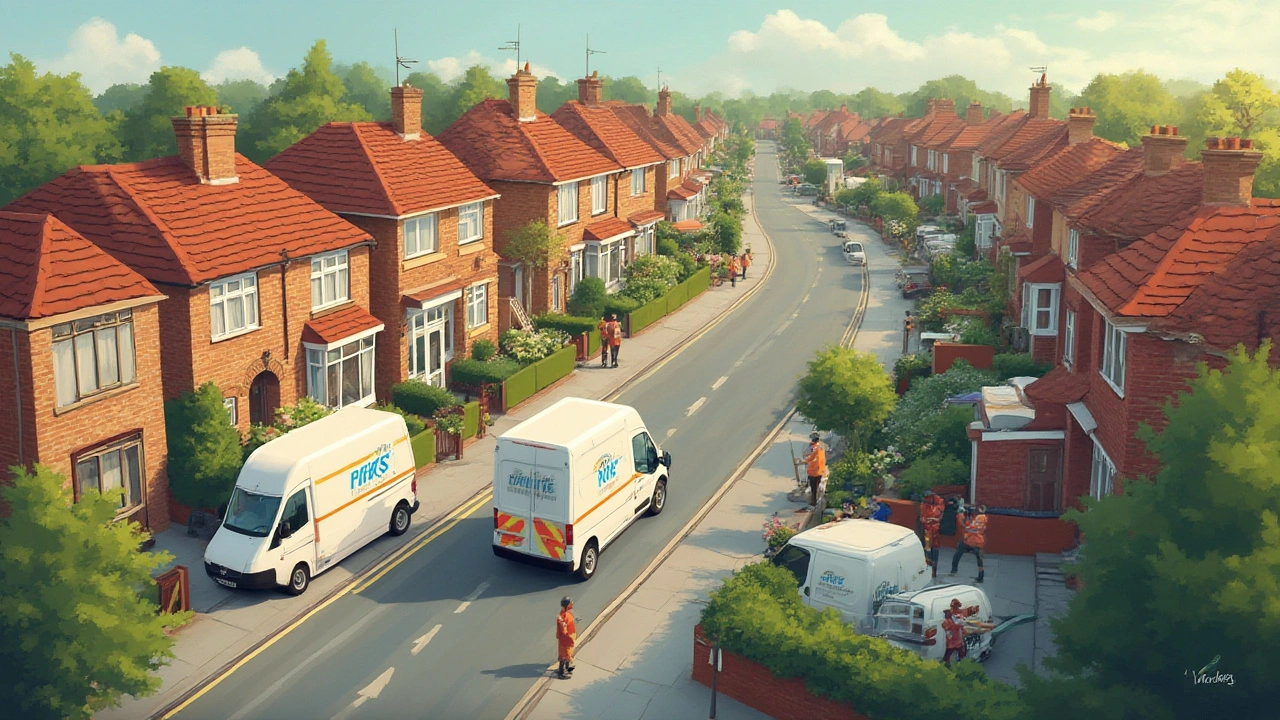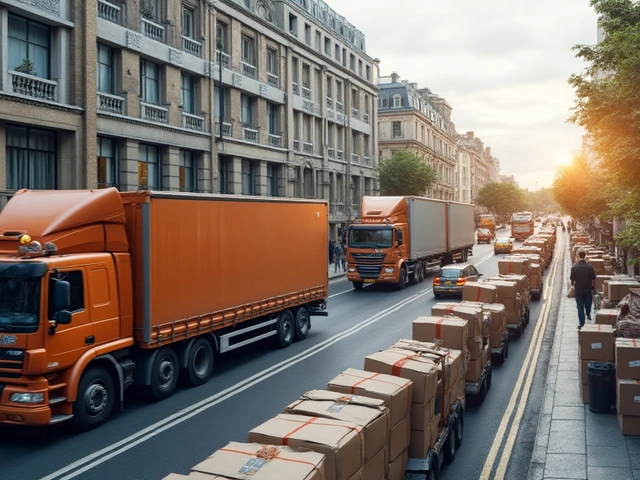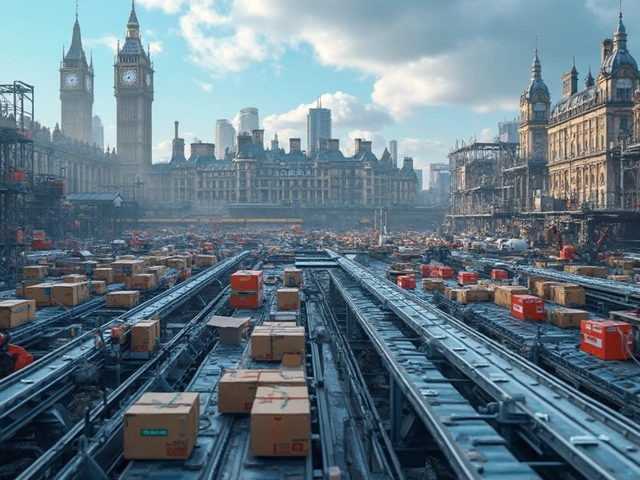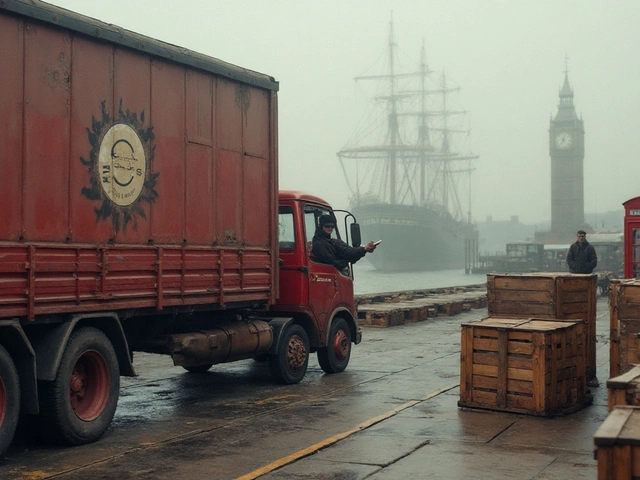Say you try to order your favorite snack online, but the checkout tells you, “Sorry, we don’t deliver to your address.” That can be pretty annoying, right? What you’re bumping into here is called delivery coverage. This little detail shapes everything from which shops get your business to whether you can send flowers to Grandma. More than a boring logistics term, delivery coverage has a real grip on your choices and wallet. Let’s break down what it really means and how it shapes how stuff moves from stores to your door.
Understanding Delivery Coverage
Delivery coverage is basically a map of where a courier, shipping company, or retailer will send their products. Some only handle a few zip codes, others can cross states, borders, or oceans. Think about Amazon Prime promising next-day delivery—only available where they can actually reach you with their network. Small local bakeries or restaurants might just stick to a tight radius to keep food fresh. Cover too much ground and the risk, cost, and complexity shoot up.
For companies offering delivery, defining their coverage isn’t just about drawing circles on a city map. There’s a swirl of factors in play: population density, local demand, road quality, driver availability, and how reliable the infrastructure is. Some businesses use third-party couriers to widen their reach, while others invest in their own delivery vans and staff. It’s no accident that big grocery chains usually appear on app drop-downs in city centers before they ever reach far-flung towns.
Coverage is always shifting, too. A retailer may start out only shipping to one city and expand over time, depending on how business goes. Seasons can also affect where companies deliver. For example, certain mountain towns are unreachable after big winter storms.
Why Delivery Coverage Matters to Businesses
For e-commerce shops, grocery stores, restaurants, and any service moving goods to customers, delivery coverage matters a ton. If your business underestimates it, you risk committing to deliveries you can’t make, leading to refunds, angry customers, and bad reviews. Miss a busy area and you hand over potential buyers to your competitors.
Let’s talk expenses—delivering far and wide costs more. You need extra drivers, vehicles, insurance, and even warehousing closer to faraway customers. Anything beyond your “regular zone” might trigger extra rates that get passed on to customers. Plus, the more ground you cover, the trickier it is to guarantee same-day or next-day delivery.
Companies often analyze customer data and orders to figure out which zip codes bring in the most bucks. That’s why you’ll notice big city centers get the fastest, cheapest shipping, while rural areas either pay more or get left out altogether. Members-only perks, like free express shipping, also tend to be limited to areas with the densest order activity.
It’s not just about profits. Product quality and the brand’s image are at stake. Cold-chain items, like frozen foods or pharmacy products, need to arrive quickly and at the right temperature. Covering too much ground without having the proper resources risks spoiled goods and wasted money.

How Delivery Coverage is Calculated and Communicated
When companies set up shop online or open new markets, one of the major steps is plotting out their delivery coverage. There’s software for this—think advanced delivery route planners and mapping tools that factor in traffic, legal routes, dropping zones, and order data.
This isn’t guesswork. Companies crunch numbers: How long will it take to deliver a parcel from their closest warehouse? Is there enough volume to make sending a delivery van worth it, or is it a one-off that eats into profits? For food brands especially, how far can a meal travel without it turning limp and cold?
Large carriers like UPS, FedEx, and DHL typically publish transparent service maps and cover both bustling cities and remote villages—at a price. E-commerce platforms, on the other hand, often use checkout address validators. Enter your zip code and discover if they can get to where you live or work. Sometimes you’ll find a “Check Your Delivery Coverage” tool right on the website. More companies now overlay their coverage maps over Google Maps or provide real-time zip code checkers.
| Company | Standard Delivery Area | Typical Fees Outside Area |
|---|---|---|
| Amazon Prime | Major metro areas, expanding to suburbs | Usually unavailable or not expedited |
| FedEx | Nationwide (varies by service) | Surcharges for remote zones |
| Instacart | Urban and suburban; limited rural | No service or higher fees |
| Local Florist | 5-10 miles radius | Sometimes negotiable, often unavailable |
The real challenge is making this coverage info clear to customers. That’s partly why some brands show “Sorry, we don’t deliver there yet!” pop-ups as soon as you load their site. It’s a small thing that saves a lot of headaches down the line.
Tips for Expanding or Navigating Delivery Coverage
If you run a business—or just want to get your online orders wherever you live—there are some tricks to stretching or decoding delivery coverage. For companies, expanding means balancing ambition with reality. The best bet is to focus on areas where you already see lots of orders or requests, then test expansion a little at a time. Pilots or “soft launches” let you see what works and fix issues before you go all-in.
Outsourcing to third-party courier services is a common way to stretch your reach quickly, without the massive investment in trucks or staff. Think DoorDash for restaurants, or Parcelhub for retailers. Just know that this comes with less control over the customer experience.
For shoppers stuck outside your favorite shop’s coverage, don’t lose hope. Sometimes, pickup at a local partner point or using a forwarding address service works. Even classic tricks like ordering to your workplace or a friend’s house can get around restrictions. If you’re feeling bold, reach out directly—customer service might make exceptions for big orders or special occasions.
The ultra-competitive market means delivery zones expand fast. Keep an eye out for online updates, loyalty emails, or “now delivering to your area” announcements, especially from food chains and courier companies. Flash sales or trial periods are often rolled out to gauge demand—if you order during these times, your location may get added to the regular roster.
On a business level, review your heatmaps (where orders come in) at least every quarter. Double-check complaints or refund requests—clusters in certain neighborhoods might mean it’s time to tweak your coverage or pricing. And always, always make coverage tools easy to access so nobody wastes time or leaves angry.

The Future of Delivery Coverage
As online shopping keeps exploding, so does the demand for wider, faster, and cheaper delivery coverage. Some companies now experiment with drones and autonomous vehicles for hard-to-reach spots—it’s not sci-fi, it’s being tested in small towns by giants like Walmart and Alphabet’s Wing. Micro-warehouses are popping up in neighborhoods to serve ‘instant’ delivery windows.
New tech also lets stores crowdsource delivery by matching drivers to orders via smartphone apps, cutting down those gaps where traditional couriers won’t go. Expect maps and algorithms to get sharper, so coverage can flex based on weather, traffic, or festivals. For remote or rural folks, strong local delivery partnerships offer hope for breaking through those ‘not available in your area’ dead zones.
Still, don’t expect every mountain cabin to get pizza drones dropping by this year. Logistics costs, regulations, and—let’s be honest—profit margins will always play a part. The bottom line is that delivery coverage touches everything: what you can buy, where you buy it, and how happy you feel about shopping online. So next time you’re dazzled by a speedy delivery promise, remember there’s a map, an algorithm, and probably someone in a van making it all work.





